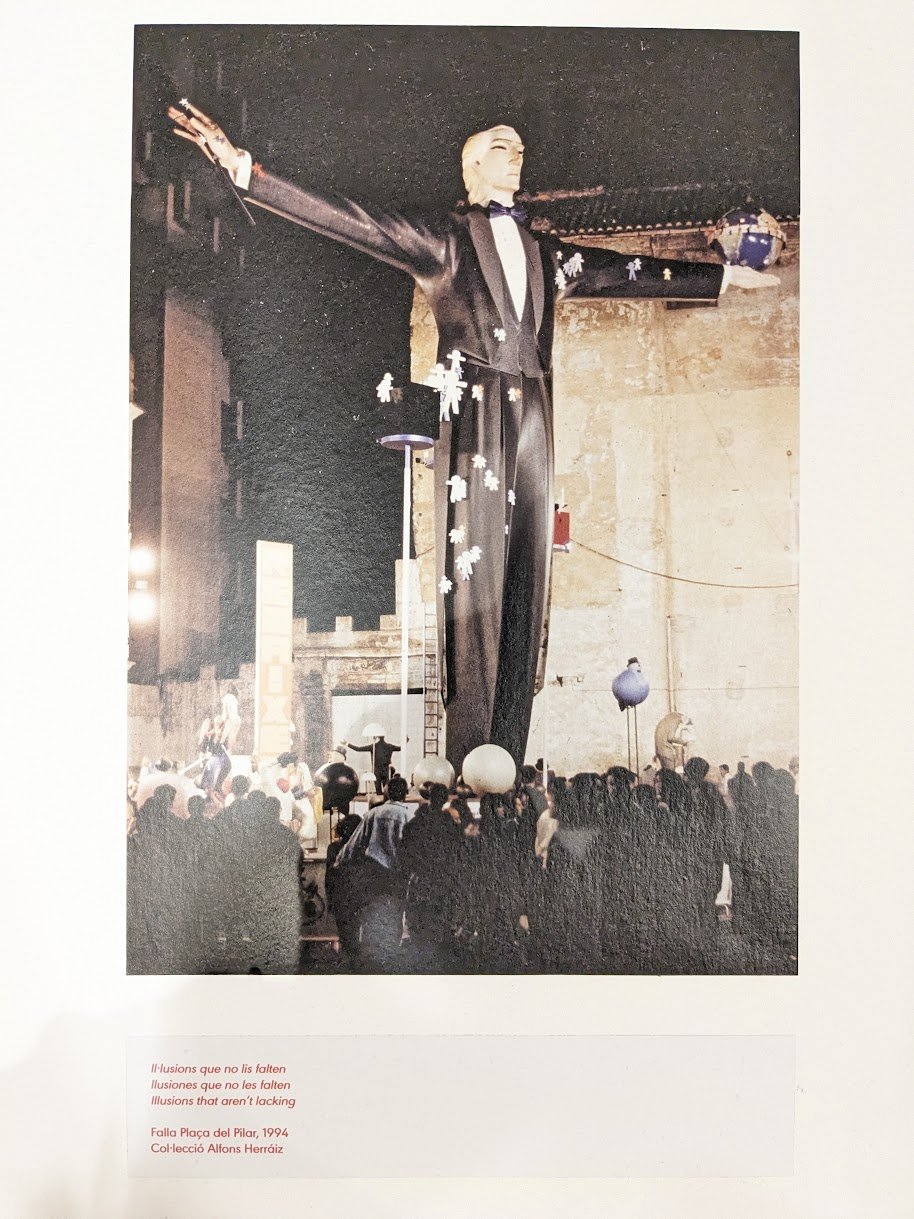The Modernistic Journey of Alfredo Ruiz through the World of Fallas
art, news

Las Fallas is a festival like no other. Celebrated annually in Valencia, Spain, it is a vibrant and explosive celebration that combines art, culture and tradition. The festival is known for its giant sculptures made of paper-mâché, wood and other materials that are erected in the city's streets and plazas. These sculptures, known as fallas, are a testament to the artistic and creative prowess of the people of Valencia. One artist, in particular, stands out for his contribution to this art form - Alfredo Ruiz. The artist dedicated his life to creating some of the most innovative and striking fallas the festival has ever seen. He was a pioneer in bringing modernity to the traditional art form, and his work continues to inspire artists and audiences alike.
The IVAM's recent course of action regarding the Las Fallas festivities forms part of the LAB/IVAM - Ciutat Project, an initiative aimed at establishing a connection between the museum and the local cultural happenings, thereby enhancing the historical background of the festival. The objective is to shed light on the influence of the celebration on the present and future, particularly given the current socio-political climate, which is constantly evolving.
To this end, the artist Alfredo Ruiz Ferrer's work is being researched, which is focused on his contributions to the Fallas workshops. Born in Valencia in 1944, he began working at the age of thirteen and his work continued until he closed his workshop in 2002 and he sporadically returned to creating Fallas until 2012. Throughout his journey, he transitioned from creating Fallas with a baroque and grotesque style inherited from his teachers to exploring abstract minimalism. In a significant first for Las Fallas, he incorporated references to the artistic styles of the international avant-garde.

His art, marked by a progressive formal plurality and a critical approach to significant social issues, led to heated debates in the public space. His dedication to finding a language he could defend and endure paved the way for his entire practice, which was a rebellion against the baroque, essentially aiming to burn the beautiful. Alfredo Ruiz has always been captivated by the public space and the street as the ideal places to share and engage, which have always been central to his approach. By extending beyond the boundaries of the museum, this use of public space consecrates it as a critical reference, due to the intrinsic value of opening up and creating new paths. All of this in the midst of a geometric forest.






Discover how AI is reshaping the UK art scene, blending technology with creativity to redefine artistic expression.
A visually stunning exploration of ambition and capitalism, The Lehman Trilogy at the Gillian Lynne Theatre is a gripping theatrical experience.
Minsuk Cho’s Archipelagic Void, the 23rd Serpentine Pavilion, reimagines the traditional pavilion design with five timber structures surrounding a central open space.
This year's edition will be showcased in the main exhibition areas and across Venice, encapsulating the essence of modern art.
Explore the vibrant Ndebele-inspired paintings of this esteemed South African artist, bridging cultures and communities while reflecting on identity, migration, and belonging.
An interplay between organic materials and technological influences, from traditional dyeing techniques to digital photography, in this thought-provoking showcase.
As the 1960s unfolded, subjectivism faced challenges from new geometric proposals, notably North-American hard-edge painting.
Public auction sales in the UK declined by 12% to $3.1 billion, but it maintained its position as the third-largest auction market worldwide.
From thought-provoking installations that challenge societal norms to retrospectives honoring iconic figures in contemporary art.
The gallery's skylit ambiance illuminates Steir's masterful exploration of color and form, creating a visually stunning and immersive experience for visitors.
the principle of self-ownership, wherein individuals possess the sovereign authority over their own bodies and life choices.
Travel to 1920s Paris, where André Breton and Paul Éluard led the Surrealist movement, aiming to revolutionize human experience by embracing the unconscious and dreams, rejecting rational perceptions of life.
Sherpa's Californian sojourn in his late twenties became a crucible for experimentation. Collage, sculpture, and installation became his artistic companions as he grappled with displacement, identity, and globalization.
Creative interpretations of three talented artists as they navigate the complex landscape of neuroscience.
Explore the intersection of technology and creativity as Ornagh continues to push artistic boundaries, offering a unique perspective on freedom through her evolving XR artistry.
The Garden of Earthly Delights is not merely a painting; it's an immersive experience, inviting you to uncover the depths of its artistic brilliance through depths of Subconscious.
Brancusi's artistic legacy resonates profoundly, paving the way for the minimalist art movement that unfolded in the 1960s and persisted thereafter.
The project sparks intense debate in the art world, with some praising Molodkin's creativity and political stance, while others criticize it as vandalism and disrespect to art legacies.
Uncover the lasting impact of Cubism on 20th-century art movements. Cubism: A Road of No Return to Abstract Art through Geometry and Planning.
Explore the impact of Iris Apfel, a fashion maven whose unique style transcends trends.
Gain insights into the latest trends and developments in AI regulation within the art market through our in-depth analysis of regulatory frameworks.
Experience the brilliance of Amsterdam Light Festival! Plan your visit and explore the enchanting light artworks. Unveil the magic this winter season.
Vivian Maier's work continues to influence contemporary photographers, inspiring them to explore the nuances of everyday life and human interaction.

























A stark contrast between the public image of tradition and civic pride, and the reality of a city grappling with profound economic and social inequality.